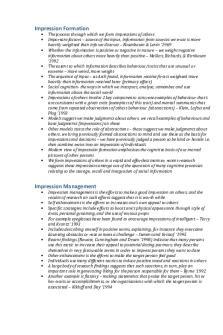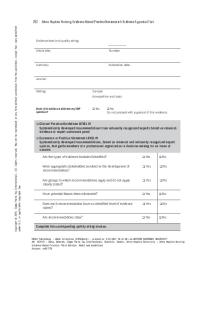Class notes- Firearms, tool marks, and impression evidence PDF

| Title | Class notes- Firearms, tool marks, and impression evidence |
|---|---|
| Course | Forensic Science |
| Institution | Syracuse University |
| Pages | 5 |
| File Size | 108.9 KB |
| File Type | |
| Total Downloads | 31 |
| Total Views | 142 |
Summary
Professor James T. Spencer...
Description
4/15/19 -
-
-
Ballistics- the science of the travel of a projectile in flight. The flight path of a bullet includes: travel down the barrel, path through the air, and path through a target - Terminal ballistics- what happens when objects hits target - Controlled expansion of burning gunpowder generates pressure (force/area) - The area is the base of the bullet (equivalent to diameter of barrel) and is constant. - The energy transmitted to the bullet will depend upon the bullet mass times force times the time interval over which the force is applied (function of barrel length) - Bullet travel through a gun barrel is characterized by increasing acceleration as the expanding gases push on it. The longer the barrel, the greater the acceleration. - Gases push bullet through the barrel; once out of barrel, gas force is no longer present, no longer accelerating - Kinetic energy (KE) = ½ MV2 Firearms - Caliber- diameter of the bore (usually in 1/100 inch or mm (.22 cal or 9mm) - Forearm identification: - Size and shape of bullet/case - Rifling match - Grooves carved on inside of the barrel - Firing pin/case impression match - Striations on bullet match - Scratches on the bullet as it moves along the barrel - Serial numbers (can be restored) - Bc people scratch it off Bullets and projectiles - Gun mechanics
-
-
-
Bullets - Ideal bullet- long, heavy needle, but it would go right through the target without dispersing any of its energy - Spheres would be retarded the greatest and release more energy, but might not get to the target. - A compromise shape is a parabolic curve with love frontal area and wind-splitting shape. - Best bullet composition is lead (Pb) which is high density and cheap - Soft metal with low melting point → seals the bullet to the barrel, so no gas can get through so that all the energy is pushing the bullet - Needle like to cut through wind, travel fast, high accuracy - Sphere like shape has almost no accuracy but very powerful because it dumps energy into the target - Like a small cannon - Small entrance wound, HUGE exit wound, if any (size of the back) - Tumbling dictates the injury pattern (“terminal ballistics”) - A short, high velocity bullet begins tumbling (ricochet/bounce) more rapidly in tissue - A longer, heavier bullet might have more KE at a longer range when it hits the target … Bullet injury - Laceration and crushing- low velocity bullets, as in handguns, do virtually all their damage via CRUSHING - Temporary cavitation - Significant with projectiles travelling in excess of 1000 fps. A “permanent” vacity is caused by the path of the bullet itself, causing the wound cavity to be stretched outward - Pushes organs out of waves - Most of the damage - Shock waves - Pressure waves can cause damage - Bone beveling - Can ricochet, break through, bounce around (skull) - Entrance and exit wounds - Entrance is small - But exit: bon- exit wound is much larger → bone gets beveled
… -
Forming rifling - One modern method uses broach cutters to cut all the grooves simultaneously by forcing cutter down barrel and rotating the cutter
-
-
-
-
-
-
Rifling - Barrels have: - Grooves and lands - Striations (small lines)- microscopic imperfections from rifling tools or chips of steel from branch cutter - No 2 rifle barrels, even those made in succession, will have identical striation markings Shotgun - Small pellets - Used for short/close range - Don’t really have to aim - Sends shot out in different directions Comparison microscope - Important tool for firearms examiner - Two compound microscopes combined in one unit - Can view 2 things through one microscope Bullet comparison - Obtain sample unit - Fire similar bullet from suspect gun (into water or cotton-filled tank) - Compare striations, grooves/lands, twist direction and angles between test and sample bullets - If scratches line up, then match - No two bullets will be 100% the same Cartridge cases - Pulling trigger releases the firing pin that then strikes the primer (primary explosive ignites the secondary explosive) and ignites the powder - The bullet case is propelled backwards (as the bullet moves forward- Newton’s law) and is imprinted by the breechblock (back of barrel). - Breechblock has striations that mark cases - Firing pin impression left on back of case - Spent case extractors also leave marks identifiable marks Gunpowder residues - The firing pin of a forearms strikes the primer of a cartridge that ignites sending a flame into the cartridge case. Gunpowder in the cartridge case burns, causing it to change from a solid material to a gas creating pressure within the cartridge which forces the bullet down the barrel. When the bullet exits the muzzle, pressure behind it blows … - Modern smokeless gunpowder, and black powder, contains nitrate compounds - Can look at shape of burn/residue - Firing a weapon does not fully consume all the propellant (gunpowder) - Unburned and partially burned propellant with smoke are emitted - Can determine firing distance - Chemical analysis of residues
-
-
-
- Can see GSR on victim or suspect’s hand Serial number restoration - Many metal manufactured items have serial numbers stamped in them for Id - When stamped, metal crystal structure distorred/strained into the metal block. - Apply etching agent to block and the strained area will etch more rapidlyshowing original numbers. Mural on HBC: Sacco and Vanzetti - April 15, 1920- two men attacked, shot, and killed 2 security guards in Braintree Mass, escaping with $16,000 in payroll - Eyewitness said the men “looked Italian” - Found many 0.32 bullet shells made my Peters, Winchester, and Remington - Later, 2 men arrested - Sacco and Vanzetti- Italian immigrants - S&V had a 0.32 Colt revolver and 23 bullets made by Peters, Winchester, and Remington - Vanzetti also had a .32 revolver with shotgun cases identical to one found at a failed payroll attempt 4 mo. earlier - S&V were “anarchists” - V first convicted of first payroll attempt (S not charged) - Trial then 1921 for both on double murder charges- their defense sought support from many left-wing groups as a legal attach on their politics. Started the S&V Defense fund - Long trial: 59 prosecution and 99 defense witnesses (including many “quack” experts that have just seen a gun before) - Lots of evidence: much discounted and not valid but also some good evidence - Kept changing their story- sketchy - Damning evidence was that the bullets were of obsolete manufacture - Convicted and sentenced to death- executed in 1927 - Maintained their innocence - Ballistics experts used compound microscopic to compare samples -- all came to the conclusion that came from S’s gun Tool marks - Individualized marks (ex. striations) - Typical features (class characteristics) - Accidental of identifying features (individual characteristics) - Cuts, tears, gouges, or other wear marks to individualize to tool - Ex. scratches on door hinge to try to get it open - Impression evidence - Footprints - Make, model, and size of shoe - Ware patterns of show - Bitemarks (ted bundy) - Dental impression of gum, food, victims, etc - Ted bundy- convicted serial killer
-
-
Picked up for murder two sorority women at FSU using fake name and ID - One victim had bite mark on buttocks - Casting of Bundy’s teeth taken (forcibly). Found to overlay (match) exactly the bite wound. - Defended himself but convicted and sentenced to death - Before execution admitted to more than 40 other murders (but gave no info or details) Other impression evidence - Plastic liner of fake police badge impressed on wallet...
Similar Free PDFs

FIS 205 Impression Evidence
- 9 Pages

Chapter 22 Impression Evidence
- 4 Pages

Research Evidence Appraisal Tool
- 9 Pages

Impression Management Notes
- 3 Pages

Blum Evidence SP22 - class
- 3 Pages

Class 11 – Character Evidence
- 11 Pages

Marks and spencer
- 2 Pages

Evidence and Advocacy Course Notes
- 40 Pages
Popular Institutions
- Tinajero National High School - Annex
- Politeknik Caltex Riau
- Yokohama City University
- SGT University
- University of Al-Qadisiyah
- Divine Word College of Vigan
- Techniek College Rotterdam
- Universidade de Santiago
- Universiti Teknologi MARA Cawangan Johor Kampus Pasir Gudang
- Poltekkes Kemenkes Yogyakarta
- Baguio City National High School
- Colegio san marcos
- preparatoria uno
- Centro de Bachillerato Tecnológico Industrial y de Servicios No. 107
- Dalian Maritime University
- Quang Trung Secondary School
- Colegio Tecnológico en Informática
- Corporación Regional de Educación Superior
- Grupo CEDVA
- Dar Al Uloom University
- Centro de Estudios Preuniversitarios de la Universidad Nacional de Ingeniería
- 上智大学
- Aakash International School, Nuna Majara
- San Felipe Neri Catholic School
- Kang Chiao International School - New Taipei City
- Misamis Occidental National High School
- Institución Educativa Escuela Normal Juan Ladrilleros
- Kolehiyo ng Pantukan
- Batanes State College
- Instituto Continental
- Sekolah Menengah Kejuruan Kesehatan Kaltara (Tarakan)
- Colegio de La Inmaculada Concepcion - Cebu







